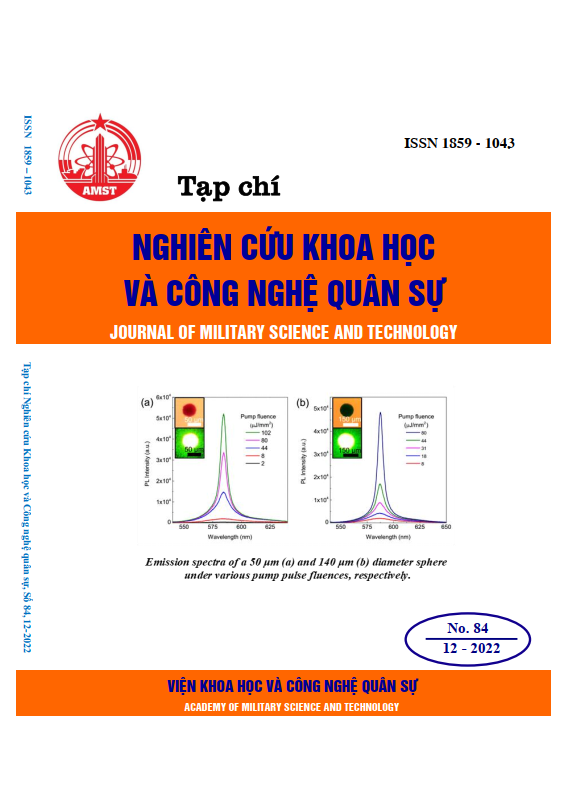A study on the influence of unit component on the properties of hiss-colored smoker cluster
392 viewsDOI:
https://doi.org/10.54939/1859-1043.j.mst.84.2022.66-72Keywords:
Hiss-colored smoker device; Hiss - colored smoker clusters; Training; Rehearsal; Training-ready to fight.Abstract
The hiss-colored smoker device is a hand-held smoke generator equipped for the security forces and the military to use in training, drills, and training - ready to fight. The hiss-colored smoker cluster is an important detail to make the hiss-colored smoker device. Unit component has a great influence on the technical properties of the product. This paper introduced the results on the influence of unit component on some technical properties of hiss- colored smoke cluster by using several methods such as STANAG 4491, 06 TCN 889:2001,... After optimizing the unit component, the results showed that the product has technical properties that suitable for the criteria stated in the standard TCVN-AN 114:2017 with the hissing time was 14,01 ± 0,37 seconds, the intensity of hissing was 94,4 ± 0,45 dB, the color smoke emission time was 13,61± 0,41 seconds and the smoke screen was red. In additon, the results of some significant properties of combustion process showed thạt the hiss-colored smoker cluster is suitable for using as a means of emitting smoke and transmitting signals.
References
[1]. TCVN-AN 114: “Quả rít khói màu”, (2017).
[2]. Ngô Văn Giao, Đàm Quang Sang, “Cơ sở lý thuyết cháy nổ”, NXB Quân đội Nhân dân, Hà Nội, (2007).
[3]. Đàm Quang Sang, Nguyễn Văn Tính, Nguyễn Văn Tuân, “Nguyên lý tính toán và thiết kế liều phóng”, NXB Quân đội Nhân dân, Hà Nội, (2013).
[4] Nguyễn Văn Tính, Trần Quang Phát, “Cơ sở hỏa thuật”, NXB Quân đội Nhân dân, Hà Nội, (2009).
[5]. Jai Prakash Argawal, “High energy materials: Propellants, Explosives and Pyrotechnics”, Wiley-VCH Verlag GmbH&Co. KGaA, (2010). DOI: https://doi.org/10.1002/9783527628803
[6]. Johann Gluck, “Development and characterization of environmantally benign light and smoke-producing pyrotechnical formalations”, Trostberg, Deutschland, (2018).







